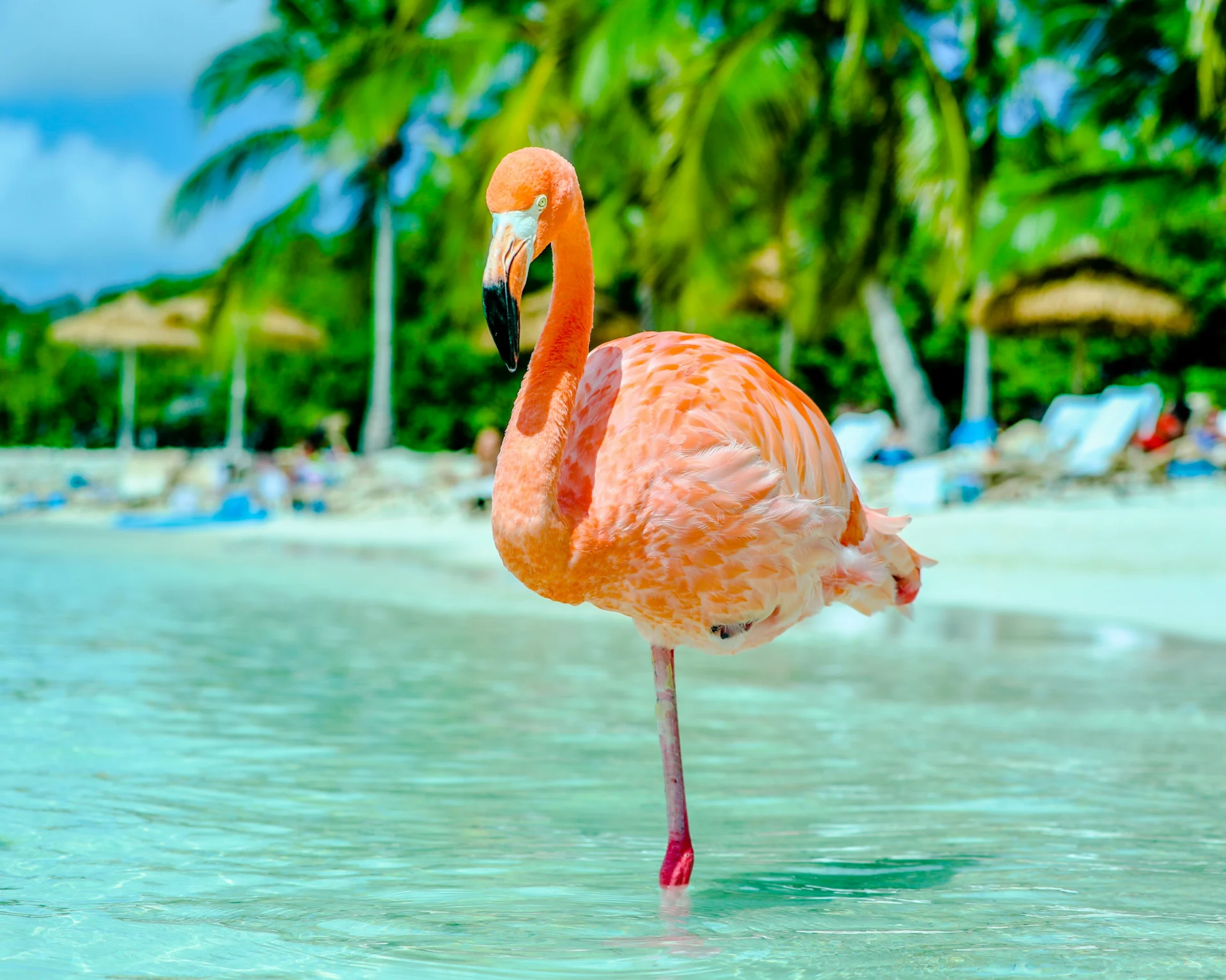Aruba vacations are among the most sought-after escapes in 2025, and if you’re planning an Aruba getaway you’re in for a treat. This guide takes a detailed look at planning a trip to this paradise in the Caribbean Sea, combining rich insider details on Aruba vacation packages, local tours, hidden gems, and how to make the most of the island’s natural beauty and island’s rich history.
Why Aruba Should Be on Your Travel Radar
As more travelers search to visit Aruba, the island continues to shine as a top Caribbean destination. Aruba’s tourism numbers are rising, with the Aruba Tourism Authority reporting that in the first four months of 2025, Aruba welcomed 518,840 guests, a 3 percent increase compared to the same period in 2024. The appeal is clear: white sand beaches, turquoise waters, vibrant nightlife, and a laid back yet adventurous vibe make it a compelling choice for vacationers.
Unlike many Caribbean destinations, Aruba is located outside the main hurricane belt, making it safer throughout the year. That stability, combined with excellent infrastructure, a welcoming climate, and increasing airlift, make it easier for visitors to plan and enjoy.
Aruba is often promoted under the motto One Happy Island, and indeed its charm comes from the warm local hospitality, scenic beaches, and a diversity of experiences from relaxing to thrilling.
Vacation Packages, All Inclusive Resorts, or Custom Rentals?
When people think of Aruba vacations, many immediately consider all inclusive resorts or Aruba vacation packages that bundle flights, lodging, and meals. These packages remain popular, especially among first-time visitors and families who prefer ease and predictability. But in recent years, demand has shifted toward more flexible accommodations, local immersion, and tailored experiences.
According to reports, in December 2024, hotel stays under “all inclusive resorts” decreased by about 6.5 percent, while “other accommodations” such as short‑term vacation rentals (STVR) grew by 7 percent. That shows a clear preference for flexibility, variety, and more personalized stays over one‑size‑fits‑all resort packages.
Vacation packages are still heavily used: in April 2025, 82 percent of visitor packages included lodging, and 77 percent included airfare. But travelers increasingly mix and match, book flights and lodging separately, or book a rental and add local tours. That hybrid approach gives guests more control over their itinerary, budget, and experience.
If your ideal vacation is lounging on a beach all day, sipping drinks, and stepping only as far as the resort pool or restaurant, then all inclusive resorts may still make sense. But if you want to explore hidden caves, snorkel pristine reefs, or tour the rugged backroads, custom rentals and à‑la‑carte tours are often a better fit.
Where to Stay: Palm Beach, Eagle Beach & Beyond
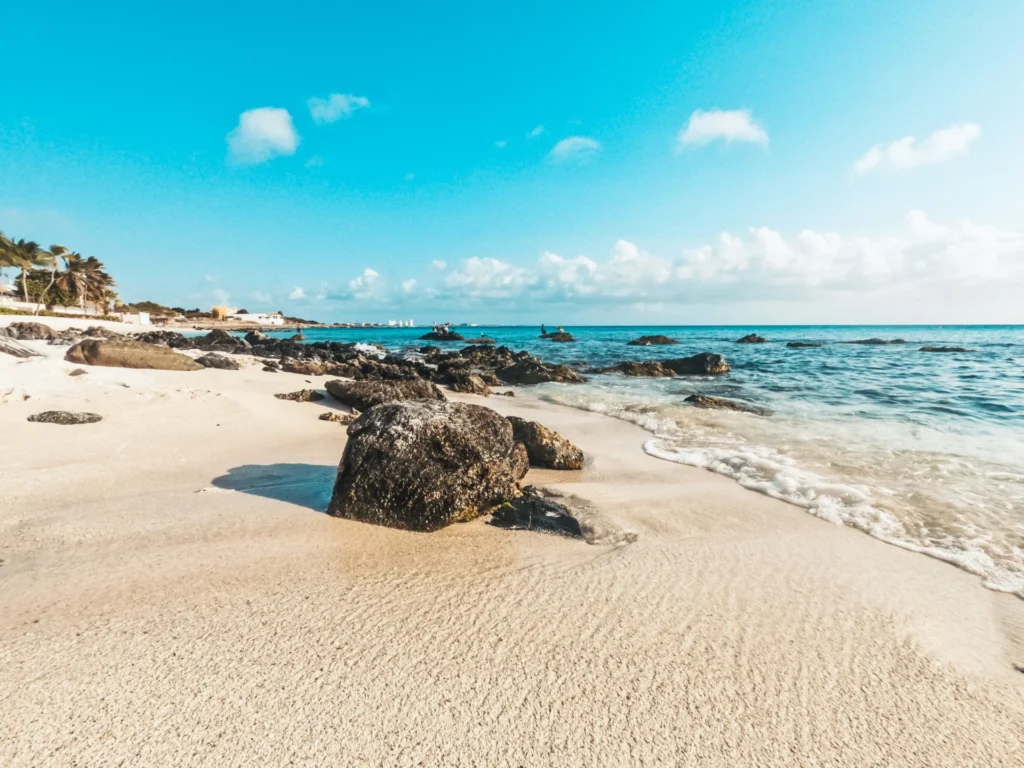
Choosing your base is a big decision for any Aruba getaway. Here’s a breakdown of the most popular areas and what they offer.
Palm Beach
Palm Beach is a vibrant area with many hotels, resorts, shops, restaurants, and nightlife. Its stretch of white sand beaches and proximity to amenities make it a favorite. Many Aruba vacation packages target Palm Beach because it balances convenience and beach access.
Eagle Beach
Eagle Beach is quieter and more romantic, with wide stretches of white sand beaches and a more relaxed pace. It’s ideal for couples or travelers seeking a quieter environment without sacrificing scenic beauty.
Oranjestad & Central Locations
If you like to be in the heart of the culture, Oranjestad offers shops, local markets, museums, and a walkable downtown with charm and color.
Noord & Malmok
These areas offer a more residential feel and often better snorkeling access. You’ll find condos, villas, and vacation rentals that let you stay closer to nature and a bit removed from the busiest zones.
Savaneta & San Nicolas
These towns in the south of Aruba are full of local flavor, street art, and lesser-known beaches. Staying here gives you a more authentic feel of the island’s culture and pace.
When comparing accommodations, look for things like: beachfront views, private pools, full kitchens, guest support, and how well the property is maintained. For vacation packages, check how many nights, meal inclusions, transfers, and add‑ons are part of the deal.
The Best Things to Do in Aruba
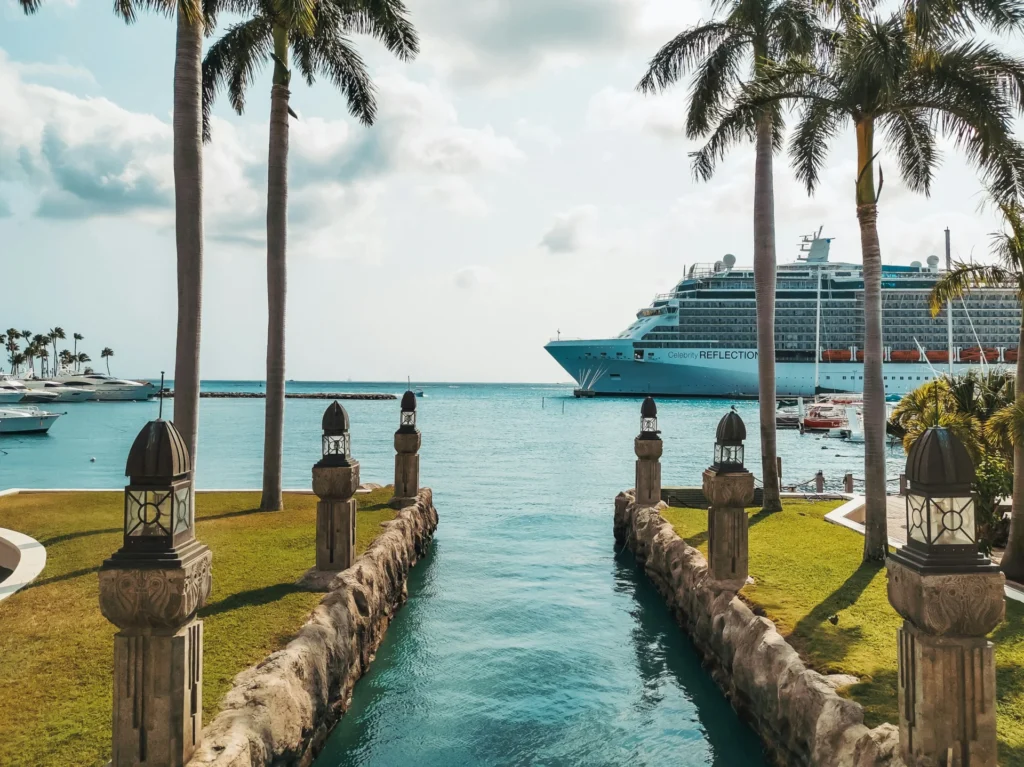
No Aruba vacations guide is complete without the highlights, beaches, parks, tours, and hidden beauties that turn a trip into a memory.
Sun, Sand & Water Sports
Start with the island’s beautiful beaches. You’ll find white sand beaches at Palm Beach, Eagle Beach, Baby Beach, and more. With turquoise waters beckoning, water sports are abundant, snorkeling, diving, paddleboarding, jet skiing, and swimming are everyday options. These activities let you explore coral reefs and marine life beneath the Caribbean Sea’s surface.
The Antilla Shipwreck is also a popular diving site, where skilled divers can explore the remains of a sunken ship in relatively shallow waters.
Arikok National Park & Rugged Landscapes
To experience Aruba’s natural beauty and diverse landscapes, visit Arikok National Park, covering about 20 percent of the island. Tours take you through rocky hills, desert terrain, hidden caves, and secluded beaches.
Popular stops include the Natural Pool (Conchi), Quadirikiri Caves, and other hidden gems. The Natural Pool, formed by volcanic rocks, offers dramatic views and calm snorkeling waters.
A favorite excursion is the Natural Pool Off‑Road Safari from De Palm Tours, featuring Arikok, hidden caves, and California Lighthouse views. UTV‑jeep combo tours are also available, though UTVs are banned inside Arikok for conservation. Many tours include pickup from accommodations, though some remote areas may be excluded.
For a unique perspective, visitors use aerial photography or standard road map aerial views to capture the island’s diverse landscapes and hidden spots, perfect for sharing with loved ones.
Culture, History & Hidden Caves
Aruba’s vibrant nightlife and local culture deserve time as well. Oranjestad offers museums, street art, shops, and dining. Learning about Aruba’s history includes visiting colonial buildings and understanding the influence of Dutch colonialism.
Historical sites worth visiting include the California Lighthouse, Bushiribana Gold Mill Ruins, and the Antilla Shipwreck. The Quadirikiri Caves house Amerindian petroglyphs and are part of the island’s past. The California Lighthouse, perched atop a hill, offers breathtaking views over the northern coast and a photographic “bird’s eye” vantage.
Sample Itineraries Based on Your Travel Style
Here are itinerary ideas for different trip lengths:
3‑Day Getaway
Day 1: Relax at Eagle Beach, take in the white sand beaches, swim and snorkel
Day 2: Tour through Arikok National Park, visit hidden caves, Natural Pool, California Lighthouse
Day 3: Catamaran or snorkeling excursion, beachside lunch, evening walk through Oranjestad
5‑Day Escape
Add in deeper explorations: a full De Palm Tours excursion, diving or snorkeling at Antilla, exploring southern towns, sunset sail
7‑Day Vacation
Combine the above with downtime to relax, optional day trip to nearby islands or snorkeling-only day, deeper cultural immersion
These itineraries give you flexibility to mix adventure, relaxation, and local immersion.
When to Visit & Weather Considerations
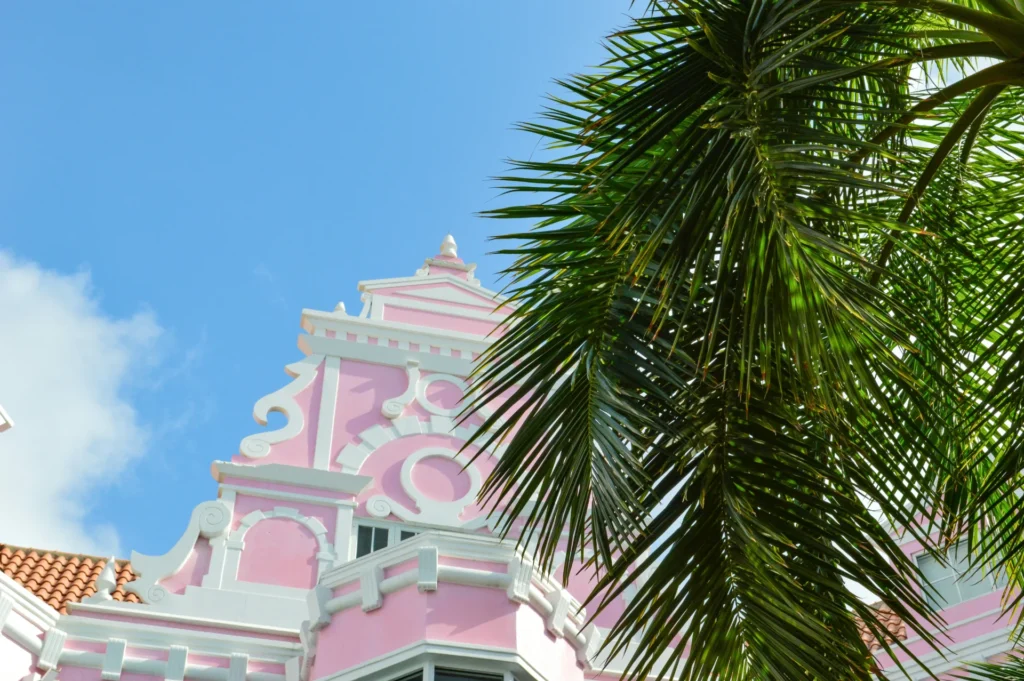
Aruba’s climate is warm and inviting year-round, with consistent temperatures and bright skies. However, there are slight seasonal shifts to consider.
- Peak Season (Dec–April): Best weather, but also the highest prices
- Shoulder Season (May–August): Excellent balance of weather, fewer crowds, and better deals
- Rainier Period (October–January): Occasional showers, but rarely prolonged
If your goal is beach days and maximal sun, aim for January through August. If you prefer better deals and don’t mind a quick shower, October to December can be a good window.
When planning, always pack a bathing suit, reef‑safe sunscreen, and be ready for sudden coastal breezes.
Practical Travel Tips & What You Must Know
Valid Passport & Entry Documents
To visit Aruba from the U.S., you need a valid passport for the duration of your stay, and you’re required to complete the digital ED (Embarkation/Disembarkation) card before arrival.
Domestic Flights & Getting There
Many visitors fly direct from U.S. gateways into Aruba. Some choose to fly into nearby locales and connect via regional or domestic flights, depending on deals. Always compare options when building your Aruba vacation packages.
Once on island, taxis, shuttles, and rented cars are common. If your tour includes “pick up location,” confirm whether your lodging is eligible for pickup or if you must meet at a central point.
Dress Code & Local Customs
Aruba is relaxed in sunwear, but in restaurants, churches, or at historical sites, modest attire is appreciated. Carry a light cover‑up or sarong for those visits.
Safety & Health
Aruba is considered one of the safer places in the Caribbean. The U.S. rate it as Level 1: Exercise Normal Precautions. Tap water is safe to drink and healthcare facilities are solid. Still, travelers should carry travel insurance and follow basic precautions.
Internet & Communication
Many accommodations offer WiFi. For deeper connectivity, you may purchase a local SIM or mobile hotspot. Use your phone for maps, tour info, and reservations.
How to Get the Most Value from Aruba Vacation Packages
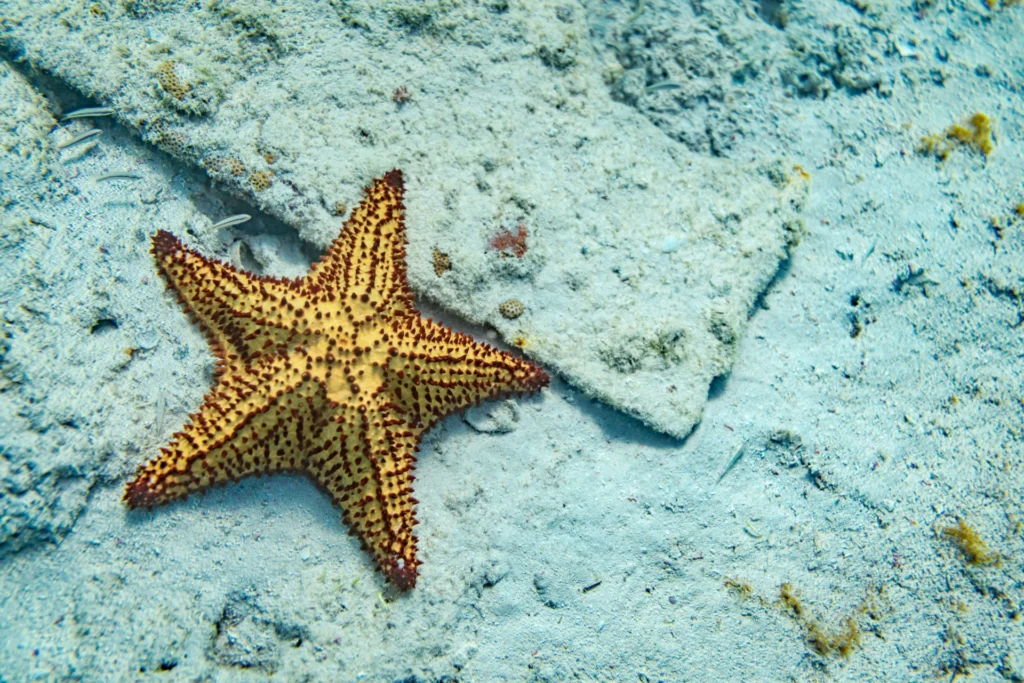
When comparing vacation packages, always break down what’s included: flights, accommodations, transfers, meals, tours, and extras. Don’t assume everything is covered. Sometimes booking a flight separately and combining with a local property or tour provider saves money and gives more flexibility.
Be careful with extras and add-ons. A so-called “resort credit” may only apply to in‑resort services, and tours booked through non‑resort providers often offer better experiences. Use a “detailed look” at each package inclusion before you commit.
Frequently Asked Questions
Is Aruba expensive to visit?
It depends. Peak season and high-end resorts can be pricey, but vacation rentals, local dining, and flexible tours can make it much more affordable.
Do I need a car in Aruba?
If you stay in central zones like Palm Beach or Oranjestad, you can rely on taxis and tours. To explore the island fully, a car or guided off‑road tour is very helpful.
Is Aruba family‑friendly?
Yes. With calm snorkeling spots, shallow beaches like Baby Beach, safe conditions, and kid-oriented tours, Aruba is a strong choice for families.
What’s the best month to visit Aruba?
January through April is ideal for weather and beach time. For better rates, May through August offer a strong balance.
How far ahead should I book a vacation rental or package?
For peak season, aim for 3 to 6 months ahead. In shoulder season, 2 to 3 months’ lead time is often enough.
Why Aruba Stands Out in the Caribbean
What sets Aruba vacations apart isn’t just the white sand beaches and azure sea, it’s how the island combines laid back elegance with adventure, culture, and comfort. You can relax on Eagle Beach at dawn, explore hidden caves in the afternoon at Arikok, join a sunset sail, then hit local bars for vibrant nightlife.
With rising visitation, Aruba’s infrastructure, air routes, and tourism offerings are expanding. The island’s tourism strategy encourages sustainable travel and deeper local connection, letting each visitor experience more than just the surface.
So whether you’re a thrill seeker or a chill beach devotee, Aruba offers something for every pace and interest.

